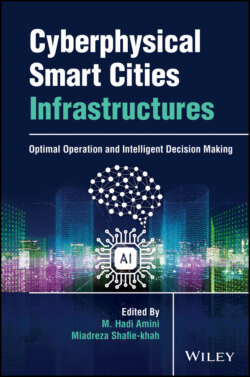Читать книгу Cyberphysical Smart Cities Infrastructures - Группа авторов - Страница 36
3.2 Rise of the Embodied AI
ОглавлениеIn the mid‐1980s, a major paradigm shift took place toward embodiment, and computer science started to become more practical than theoretical algorithms and approaches. Embedded systems started to appear in all kinds of forms to aid humans in everyday life. Controllers for trains, airplanes, elevators, air conditioners, and software for translation and audio manipulation are some of the most important ones, to name a few [23].
Embodied artificial intelligence is a broad term, and those successes were for sure great ones to start with. Yet, it could clearly be seen that it was a huge room for improvement. Theoretically, the ultimate goal of AI is to not only master any given algorithm or task that is given to but also gain the ability to multitask and get to human‐level intelligence, and that as mentioned requires meaningful interaction with the real world. There are many specialized robots for a vast set of tasks out there, especially in large industries, which can do the assigned task to perfection, let it be cutting different metals, painting, soldering circuits, and many more. However, until one single machine emerges to have the ability to do different tasks or at least a small subset of them by itself and not just by following orders, it cannot be called intelligence.
Humanoids are the main thing that comes to mind when we talk about robots with intelligence. Although it is the ultimate goal, it is not the only form of intelligence on Earth. Other animals, such as insects, have their own kind of intelligence, and due to being relatively simpler compared to humans, they are a very good place to begin with.
Rodney Brooks has a famous argument that says it took the evolution much longer to create insects from scratch than getting to human‐level intelligence from there. Consequently, he suggested that these simpler biorobotics should be first dealt with in the road to make much more complex ones. Genghis, a six‐legged walking robot [24], is one of his contributions to this field.
This line of thought was a fundamental change and led researchers to have a change of direction in their work, and with that came attention to new domains and topics such as robotics, locomotion, artificial life, bioinspired systems, and so on. The classical approach did not care about tasks related to the interaction with the real world, and consequently, this journey is started by locomotion and grasping.
Since not much computational power was available at the time of this shift, a big challenge for the researchers was the trade‐off between simplicity and the potential to operate in complex environments. An extensive amount of work has been done in this area to explore or invent ways to exploit natural body dynamics, materials used in the modules, and their morphologies to make the robots move and become able to grasp and manipulate items without sophisticated processing units [25, 27]. It goes without saying that the ones who could use the physical properties of themselves and the environment to function were more energy‐efficient, but they had their own limitations. Not being able to generalize well to complex environments was a major drawback. However, they were fast as the machines with huge processing units needed a reasonable amount of time to think and plan their next action and often move their rigid and non‐smooth actuators.
Nowadays, a big part of these issues are solved, and we can see extremely fast and smooth natural moving robots capable of doing different types of maneuvers [28], but yet it is foreseen that with the advances of artificial muscles, joints, and tendons, this progress can be further improved.
